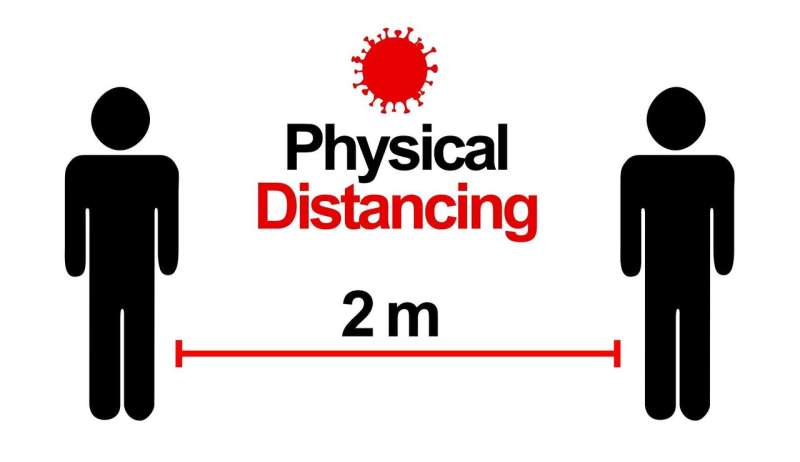Study shows physical distancing slowed growth of COVID-19 in US

Between March 10 and March 25, 2020, all 50 states and the District of Columbia enacted at least one statewide physical distancing measure to help stop the spread of COVID-19. New research from clinicians at Massachusetts General Hospital (MGH) show these government-issued physical distancing orders significantly slowed the COVID-19 epidemic, leading to an estimated reduction of more than 600,000 cases within three weeks of implementation. The findings were recently published in PLOS Medicine.
"Many have strongly suspected that physical distancing policies helped interrupt COVID-19 transmission during the early days of the U.S. epidemic," said Mark J. Siedner, MD, MPH, an infectious diseases physician at MGH and Associate Professor of Medicine at Harvard Medical School, who co-authored the research. "This study adds clear evidence to support those suspicions. The results show the timing of government-issued orders correlated strongly with reductions in both cases and deaths. In short, these measures work, and policy makers should use them as an arrow in their quivers to get on top of local epidemics where they are not responding to containment measures."
The MGH researchers—in collaboration with colleagues at University College London, the Harvard T.H. Chan School of Public Health, and the Perelman School of Medicine at the University of Pennsylvania—analyzed data from the first five months of the COVID-19 epidemic in the U.S. They collected data on government-issued orders on statewide physical distancing measures and compared changes in COVID-19 cases and COVID-19-attributed deaths in states that implemented physical distancing measures before and after implementation.
The results show the average daily COVID-19 case growth rate began declining approximately one incubation period (i.e. four days) after implementation of the first statewide physical distancing measures. The period of time required for the number of cases to double (epidemic doubling time) increased from approximately four days to eight days within three weeks of implementation. These findings are consistent with other recently published work. What is unique to this new study is researchers found that the average daily COVID-19-attributed death rate also began declining after the implementation of physical distancing measures, which prior to this study had not been analyzed.
The study looked at a wide array of measures, including school and business closures, restrictions on public gathering, and shelter-in-place orders. Most combinations of these orders appeared to have similarly beneficial effects. Because the different types of physical distancing measures were generally implemented in close temporal proximity to each other, the research team was unable to determine specifically which types of physical distancing measures were most effective.
The findings of the model suggest that statewide physical distancing measures reduced the total number of reported COVID-19 cases by approximately 1,600 cases by one week after implementation and—due to the exponential growth of the spread—by approximately 621,000 cases by three weeks after implementation.
One of the most significant limitations of the study is that the implementation of statewide physical distancing measures was not a controlled experiment. If state governments intensified physical distancing measures in response to worsening local epidemics, the analysis would likely have shown that the policies were less effective. The authors further emphasize that, in many states, people may have begun spontaneously changing their behavior in response to a worsening local epidemic even prior to any statewide measures.
"The findings show that physical distancing measures slowed the growth of the COVID-19 epidemic and saved lives, and also bought our health care leaders some time to fortify their surge capacity to deal with the epidemic," said senior author Alexander C. Tsai, MD, psychiatrist at MGH and Associate Professor of Psychiatry at Harvard Medical School. "Unfortunately, the national response has largely abdicated the responsibilities of planning a coordinated response, so we probably could have done more sooner. This means much of the time before these local measures were implemented was simply wasted."
Added Siedner: "This is a case where past success does not predict future control. COVID-19 case growth appears to be trending upward in many states around the country, including Massachusetts. If containment and more conservative measures fail, we should be prepared to slow or reverse reopening efforts. Until a vaccine is made available and widely deployed in an equitable fashion, we have few other options. Fortunately, our data show that these measures work—if we have the wherewithal to use them."


















